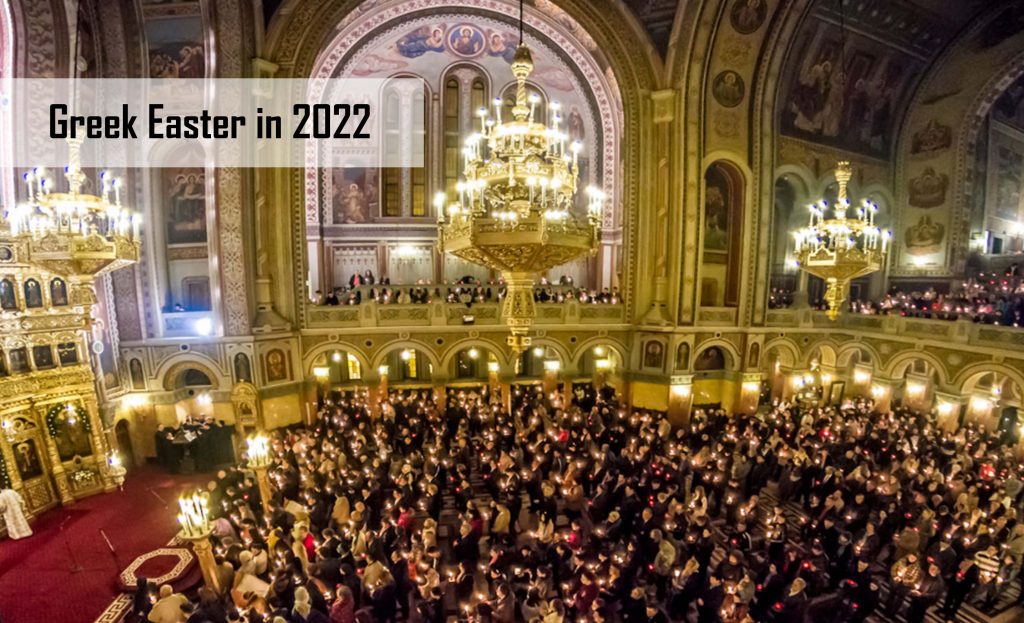Have you observed that a different type of easter called Orthodox Easter is celebrated each year? This feast is celebrated by many countries of the world like Greece, Romania, Ukraine, Bulgaria, Russia, Lebanon, The Republic of Macedonia, and Cyprus. Read on to get more information on greek Easter in 2022.

Greek Easter in 2022
The fact that Greek Easter in 2022 is the celebration of the death and resurrection of Jesus Christ (the Christian son of God ) is not disputed. The Orthodox easter and the normal Easter celebrated by the Catholics and other Christian denominations like (protestants) commemorate the same thing. They both celebrate the death and resurrection of Jesus Christ.
The way the Greek Orthodox Easter is celebrated is very different and it includes different symbols and traditions that are used to commemorate the resurrection of Jesus Christ. Orthodox Easter and the Easter of other denominations are celebrated on different dates.
When is Orthodox Easter 2022?
Orthodox Easter of the year 2022, will be observed or celebrated on Sunday, April 24th.
The celebration marks the resurrection of Jesus Christ from death, three days after his crucifixion on an orthodox good Friday. The Orthodox Easter celebration is observed by the Romanian Orthodox Episcopate Church, Russian Orthodox Church, and Greek Hellenic Orthodox Church. It is also observed by other smaller Orthodox Churches. Unlike other Churches in the world, the Orthodox Churches use the Julian Calendar to determine their feasts and holy days.
Most times or years, Easter for orthodox churches falls between April 4th and May 8th every year. In the case of the Roman Catholic church, The Ecclesiastical and the Gregorian calendar is used.
How the Orthodox Easter Date is Calculated
In the year 325 AD, the Nicaea council determined the system for fixing dates for easter. This is the Sunday following the paschal full moon ( the full moon that falls after the Spring Equinox ). Orthodox Easter will usually fall later in the year than western Christian Easter because Orthodox Easter is calculated and determined by the Julian calendar.
The Julian Vs the Gregorian Calendar
The emergence of different calendars arose from discrepancies or mistakes in astronomical calculations. The Gregorian calendar was created with the primary aim of altering the date of Easter.
History has it that when the Gregorian calendar was introduced by Pope Gregory in 1582, the continent of Europe continued to adhere to the Julian Calendar which was first implemented by Julius Ceaser in 46 BC. Since the Roman Emperor miscalculated the length of the solar year by 11 minutes, the calendar fell out of Sync with the various seasons. This became a great concern to Pope Gregory because it meant that Easter which was traditionally observed on March 21st, fell away from the Spring Equinox with each year that passes by. For this sake, the Gregorian Calendar was instituted.
Symbols of Greek or Orthodox Easter
Even with the difference in the dates for Easter, Orthodox and western easter ( permit me to call it western easter for the sake of this write-up) still have similarities in their symbols and celebration process.
One of the most important and popular symbols of Easter is the lamb. This symbol is a symbol of Christ being the lamb of God. And in the old testament, the Jews celebrated the Feast of Passover by slaughtering lambs.
In Greece, this tradition is also observed as lambs are roasted on a spit, and wine is provided in abundance. The lambs are served in Honor of Jesus Christ who was sacrificed and rose again on Easter Sunday. Lamb is the most traditional Greek Easter food. Also, red-dyed eggs are cracked against each other and the person with the last remaining uncracked egg will have good luck. Also, the feast of Easter is a time of joy, happiness, and festivity. People eat and dance throughout the night.
Checkout:
- When is Easter 2021: What you Need to Know about Easter 2021
- Easter Day 2021: Easter Day 2021 Celebration Date And Everything You Need to Know
- Google Calendar Now Lets You Record Where You Work to Help Organize Meetings
- How to Share Your Calendar in Outlook
- Greek Easter 2021 – How is Greek Easter Celebrated
- Orthodox Easter 2021 – Countries that Observe the Orthodox Easter | How the Orthodox Easter is Celebrated



